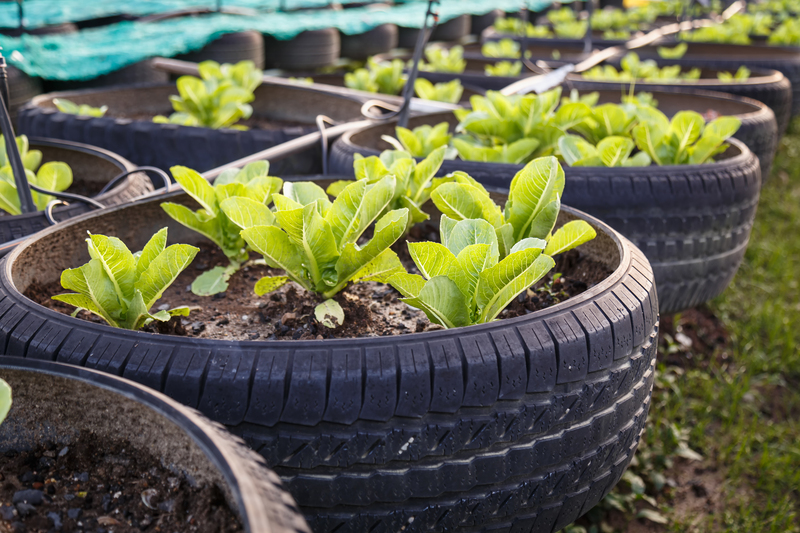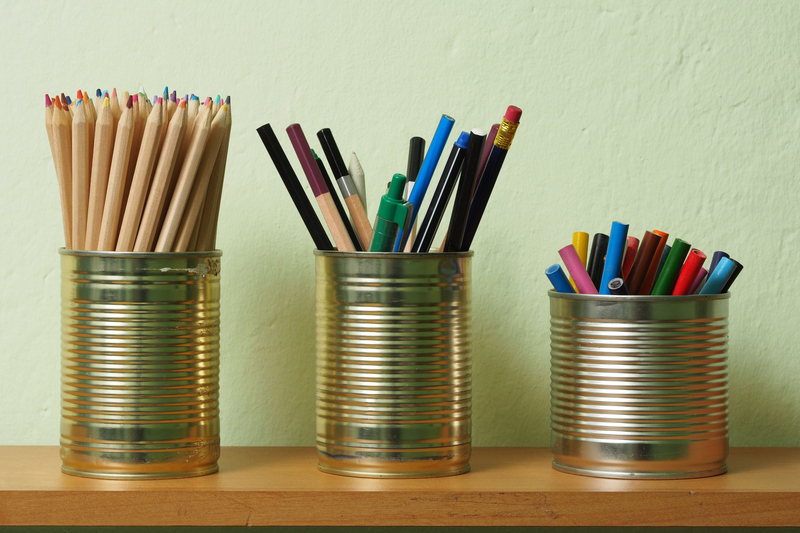Create a Productive Environment by Tidying Your Office
A well-organized and tidy office isn't just pleasant to look at--it's a powerful predictor of productivity, focus, and overall well-being at work. In today's fast-paced business world, maintaining a clean and organized workspace can make all the difference between high performance and constant distraction. This comprehensive guide explores proven strategies to create a productive environment by tidying your office. Discover tips, benefits, and actionable steps to transform your working area into a hub of efficiency.

The Connection Between a Clean Office and Productivity
There's ample research confirming that our physical environment has a profound effect on our ability to concentrate and perform tasks efficiently. Cluttered spaces breed stress and inefficiency, while an orderly setting is ideal for creative problem-solving and sustained attention. Tidying your office goes far beyond appearances--it sets the stage for a productive office environment and helps to foster brighter moods and clearer thinking.
Key Benefits of Keeping Your Office Tidy
- Reduced stress and overwhelm: Tidy workspaces minimize cognitive overload by eliminating distractions.
- Boosted productivity: An organized office makes it easier to focus on your top priorities.
- Quick access to documents and materials: Less time is wasted searching for important papers, pens, chargers, and other items.
- Enhanced professional image: A clean office makes a positive impression on colleagues, clients, and management.
- Improved well-being: Studies show that an orderly space can uplift your mood and even contribute to better health habits.
Essential Steps to Office Tidying for a Productive Workspace
To create a productive environment by tidying your office, it's important to follow a structured plan. Here's how you can turn your workspace into an organized haven--no matter where you work.
Step 1: Assess the Current State of Your Office
Start by taking a good look at your workspace. Notice the piles of paperwork, unused electronics, tangled cords, and general clutter. Ask yourself:
- What items do I use daily?
- Which items haven't been touched in weeks or months?
- Is anything broken, outdated, or unnecessary?
- How well are documents and materials categorized?
Tip: Take before-and-after photos to document your progress and keep yourself motivated!
Step 2: Declutter Ruthlessly
Clutter is productivity's enemy. Go through your office methodically and remove everything you don't use regularly or that doesn't serve a clear purpose. You can use the "three box method"--keep, discard, or relocate.
- Keep: Only essential items, tools you use frequently, current projects, and necessary documents.
- Discard: Broken electronics, outdated papers, dried-out pens, worn cables, and unnecessary promotional items.
- Relocate: Move items that belong elsewhere or are needed infrequently to appropriate locations outside your work zone.
Clearing your workspace of clutter is the first and most powerful step to creating a more productive office environment.
Step 3: Organize What Remains
With only essentials left, it's time to give everything a dedicated home. The goal is to arrange your workspace so you can easily access what you need while keeping your desk as clear as possible. To get organized:
- Use trays and folders for sorting paperwork--label each clearly (inbox, outbox, receipts, to file, etc.).
- Store office supplies in drawers or containers instead of on your desktop.
- Invest in cable organizers and docking stations to manage electronics.
- Keep only your computer, planner, and one notepad on the desk surface.
- Implement a "one in, one out" rule for new supplies and documents to control future clutter.
Optimizing Your Office Layout for Productivity
Beyond tidying up, the layout of your office plays a significant role in your ability to focus and work efficiently. A well-planned space supports good posture, free movement, and easy access to tools and resources. Here are some strategies to maximize your office productivity through smart space planning.
Invest in Ergonomics
- Adjust your chair for proper posture, ensuring your feet rest flat and elbows are at a 90-degree angle.
- Position your monitor at eye level to reduce neck strain.
- Keep frequently used items within arm's reach to minimize repetitive movement.
Maximize Natural Light
Studies confirm that exposure to daylight helps regulate mood, alertness, and overall productivity. Place your desk near a window if possible, and opt for adjustable blinds to control glare.
Use Storage Solutions Wisely
- Install shelves or cabinets above or beside your workspace for vertical storage.
- Utilize under-desk rolling drawers for extra supplies.
- Choose storage boxes or bins in uniform sizes for a neat, streamlined look.
Create Distinct Zones
- Work zone: Dedicated to computer tasks, calls, and meetings.
- Reference zone: For books, binders, and resource materials.
- Supply zone: Housing stationery, printer paper, and backup essentials.
By zoning your workspace, you reduce overcrowding and move efficiently between tasks.
Digital Tidiness: A Modern Necessity for Productive Workspaces
A clean physical environment is essential, but so is a well-organized digital space. Emails, documents, and desktop clutter can be just as distracting as a messy desk--and can hinder your office productivity just as much.
Organize Your Computer Desktop
- Group files into folders based on project, date, or document type.
- Regularly archive or delete old files that are no longer needed.
- Use a consistent naming convention to make documents searchable.
Control Your Email Inbox
- Unsubscribe from newsletters and lists you don't read.
- Create folders or use labels for client correspondence, ongoing projects, and reference information.
- Schedule two times a day for focused email review to avoid ongoing interruptions.
Backup and Protect Data
- Use cloud storage or an external hard drive for regular backups.
- Install reliable antivirus and security software.
Embracing digital tidiness is just as important as keeping your physical workspace organized when it comes to fostering a truly productive environment.
Personalizing Your Tidy Workspace for Inspiration and Motivation
While tidiness should be a priority, your office doesn't have to be sterile or impersonal. In fact, small touches of personalization can inspire creativity and motivation:
- Display one or two meaningful photos or inspirational quotes.
- Add a desk plant--studies show greenery can boost productivity by up to 15%.
- Incorporate a color scheme or art that makes you feel energized.
- Use a scented candle or diffuser for a calming, inviting aroma.
The key is to strike a balance: infuse personality without overcrowding surfaces or creating new distractions.
Developing Habits to Keep Your Office Organized
A single deep-clean won't foster ongoing productivity--it's the daily habits that matter most. Here's how to maintain a tidy office and sustain a productive environment long term:
Adopt the "One-Minute Rule"
- Immediately file documents or put items away if it takes less than a minute.
- Do a quick scan at the end of each day to clear your desk surface.
Schedule Regular Maintenance
- Establish a weekly 15-minute tidying session to catch buildup before it becomes unmanageable.
- Review your files digitally and physically each month to purge what's no longer needed.
Reevaluate and Adapt
Every few months, consider what's working and what's not. Are there supplies you rarely use? Is your filing system efficient? Adjust your organization methods based on ongoing needs.
Special Considerations: Tidying Shared and Home Offices
The techniques for creating a productive office environment apply to all types of workspaces--but shared offices and home offices present unique challenges.
Tips for Shared Workspaces
- Establish clear guidelines about shared and personal spaces.
- Label communal supplies and storage areas.
- Encourage a culture of tidiness: set a good example and gently remind coworkers of the agreed standards.
Tips for Home Offices
- Define boundaries between work and living spaces, even if working at a kitchen table.
- Use portable storage like rolling carts or compact filing boxes.
- At the end of each workday, pack away office items to mentally "shut down" and minimize home clutter.

The Business Case for a Productive, Tidy Office
Savvy organizations recognize that paying attention to the work environment can drive significant business outcomes. For leaders and managers, encouraging employees to tidy their workstations isn't just about aesthetics--it's an investment in efficiency, morale, and company culture. Here's why:
- Lower absenteeism: Tidy and hygienic offices reduce the spread of germs and lengthen the life of equipment.
- Higher retention: Staff stay longer in positive, well-managed workplaces.
- Improved client reputation: Visiting clients and partners are more likely to be impressed by an organized space.
Conclusion: Transform Your Work Life by Tidying Your Office
Whether you work from a corporate suite or a corner of your living room, the benefits of tidying your office are clear: less stress, more productivity, greater efficiency, and improved job satisfaction. Transforming your workspace may seem daunting, but every small step contributes to creating a more productive environment.
Start today: clear your desk, file that pile of paperwork, and create the organized workspace you deserve. Not only will you notice the difference in your output, but you'll also create a work environment in which you can truly thrive.
Create a productive office by tidying your workspace--and unleash your true potential at work!